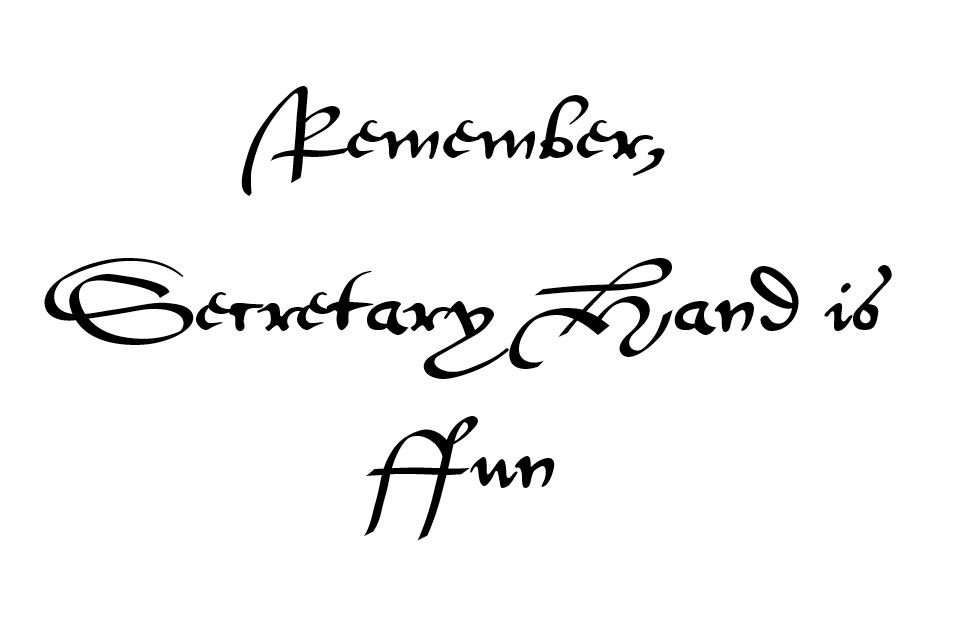Secretary Hand was used in British documents from around 1500-1700. It is a flowing handwriting that allowed scribes to quickly copy documents and it was used mainly for this purpose. You’ll need Secretary Hand for all kinds of documents from this era of British history such as legal records and especially wills that are crucial to tracing your family history. Secretary Hand also filtered through to other documents of the time, such as letters and Parish Registers, so it’s generally a very useful thing to have.
Secretary was the last form of the medieval cursive gothic script, a sort of genealogical dead end. From the seventeenthcentury handwriting took a course based instead on the humanist italic hand, the forbear of the handwriting we usetoday. We are therefore familiar with italic forms, while Secretary lettering is unfamiliar. We have to learn a whole new way of thinking about letters. All historians find this difficult so it’s useful to prepare and to take time learning. To help, I’ve put together some thoughts to bear in mind.
I) Learn the Secretary Hand letters and abbreviations with the help of an alphabet guide (such as English Secretary Hand Alphabet Examples) which can be found in books or online. Have this handy for when you begin reading. As you get more experience you can use other letters in the same document to help as your go-to alphabet reference.
II) Take the document letter by letter, not word by word. If anything, it is more like deciphering a puzzle than reading. People often call it hypnotic and you almost have to let the document take you where it want to go and enter a state of semi-understanding.
III) Although this was a standardised hand you have to get your eye in with each new scribe you meet. There was change over time too, and of course the usual provisos that any handwriting can be rushed, the pages damaged or poorly digitised.
IV) Like all historical documents it helps to appreciate the context of their creation. In this case primarily by scribes in a formal setting. Because of this the writing was meant to be easily recognisable and interchangeable from one scribe to another. These were usually formulaic texts so there will be lots of standard terms and even whole phrases you come to recognise. Therefore, once you’ve learnt the letters and format you will be able to read most things. Where names of people, places and things can be tricky in legal documents things are often repeated so they can usually be found elsewhere to compare with.
V) Like riding a bike or learning an instrument there’s lots of practice to get started but once it clicks, you have it forever. And of course, the more experienced you get the better you become.
Two points to finish. There are many online tutorials to take in your own time but I recommend either:
Quarantine Reading: Learn to Read Secretary Hand | Beinecke Rare Book & Manuscript Library
The National Archives | Palaeography tutorial
Lastly, some fun. In 2020 was released ‘Jocselyn’ a font based on the hand of a scribe who reproduced John Joscelyns’s Historiola into the MS Corpus Christi Cambridge 488. Joscelyn was secretary to Mathew Parker, a sixteenth century Archbishop of Canterbury. He contributed to Parker’s written works, was among the first Englishman to recover the ability to read Old English (of which he compiled a dictionary) as well as writing the Historiola, a short history of Corpus Christi College. Download the font and use it to practice with, typing things and then switching them to Secretary. It’s the kind of thing I wish I had when I was learning. Joscelyn Script Font › Fontesk

